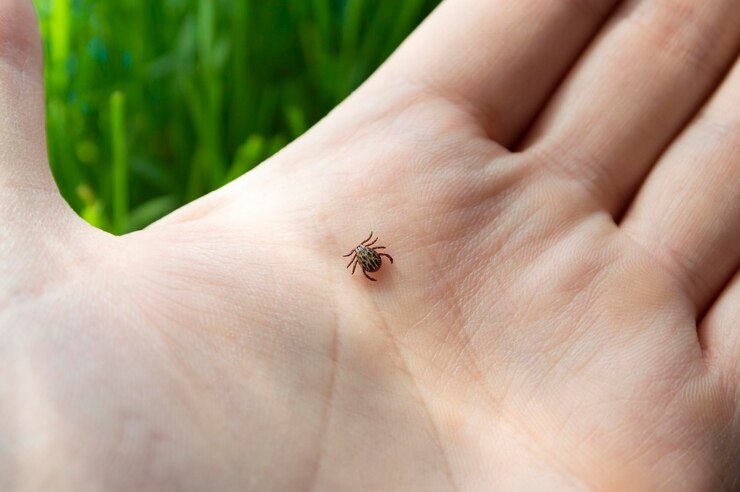Summer is here, and with it comes the great outdoors! But before you hit the trails or set up camp in that picturesque wilderness scene, there’s one tiny but dangerous thing to keep in mind – ticks. The Centers for Disease Control (CDC) has reported a recent spike in tick-borne diseases across the US, and if you want to ensure your outdoor adventure doesn’t end prematurely due to an illness, it’s crucial to know how to protect yourself. In this blog post, we’ll cover everything from identifying ticks and their bites to preventative measures that can help keep you safe while enjoying nature. So let’s get started!
Tick-Borne Diseases on the Rise
There’s been a dramatic increase in tick-borne diseases in the U.S., according to the CDC. In just one year, the number of reported cases of Lyme disease Jumped 22%.
Other tick-borne illnesses are also on the rise, including Rocky Mountain spotted fever and anaplasmosis. The good news is that there are steps you can take to protect yourself from these diseases.
Here are some tips for avoiding tick bites:
• Avoid wooded and brushy areas where ticks live.
• Walk in the center of trails to avoid contact with vegetation.
• Use an EPA-approved repellent containing DEET, Picaridin, or oil of lemon eucalyptus on exposed skin.
• Wear long pants and long-sleeved shirts when outdoors. Tuck your pants into your socks so ticks can’t crawl up the inside of your pant legs.
How to Protect Yourself from Ticks
There are a few things you can do to protect yourself from ticks:
1. Use insect repellent. When you’re outside, use an insect repellent that contains at least 20% DEET.
2. Wear long sleeves and pants. This will help keep ticks from getting on your skin in the first place.
3. Check your body for ticks after being outdoors. Be sure to check all the nooks and crannies, like under your arms, in your groin, and behind your knees.
4. If you find a tick, remove it immediately with tweezers. Grasp the tick as close to the skin as possible and pull straight up. Avoid crushing the tick, which could release more infection-causing bacteria into your body.
5. Wash the area where the tick was attached with soap and water or alcohol wipes.
The Most Common Tick-Borne Diseases
Tick-borne diseases are on the rise in the United States, and the Centers for Disease Control and Prevention (CDC) is urging people to take steps to protect themselves from these potentially serious illnesses.
The most common tick-borne diseases in the U.S. are Lyme disease, Rocky Mountain spotted fever, and ehrlichiosis. Lyme disease is caused by the bacterium Borrelia burgdorferi, and is transmitted to humans through the bite of an infected deer tick. Symptoms of Lyme disease can include fever, headache, fatigue, and a distinctive bull’s-eye rash. If left untreated, Lyme disease can spread to the joints, heart, and nervous system and can be debilitating or even fatal.
Rocky Mountain spotted fever is caused by the bacterium Rickettsia rickettsii and is transmitted to humans through the bite of an infected American dog tick or Rocky Mountain wood tick. Symptoms of Rocky Mountain spotted fever typically appear 3-12 days after a tick bite and can include fever, headache, nausea, vomiting, muscle pain, and a rash that begins on the wrists and ankles and spreads to the rest of the body. If left untreated, Rocky Mountain spotted fever can be fatal.
Ehrlichiosis is caused by several different bacteria in the Ehrlichia genus and is transmitted to humans through the bite of an infected Lone Star tick or Deer tick. Symptoms of ehrlichiosis can include Fever Headache Fatigue Muscle ac
What to Do If You’re Bitten by a Tick
If you find a tick on your body, there’s no need to panic. There are a few simple steps you can take to remove the tick and reduce your risk of contracting a tick-borne disease.
First, use a pair of fine-tipped tweezers to grasp the tick as close to the skin’s surface as possible. Slowly and carefully pull the tick straight out from the skin. Avoid crushing or squeezing the tick, as this could release infected fluids into your body.
Once the tick is removed, thoroughly clean the bite area with soap and water or an alcohol-based disinfectant. Then, wash your hands with soap and water or an alcohol-based hand sanitizer.
If you develop any symptoms of a tick-borne disease in the days or weeks following a tick bite, see a doctor right away. Be sure to tell your doctor about your recent tick bite and any other potential exposures, such as spending time in woods or tall grasses.
Conclusion
To keep yourself safe from tick-borne diseases, it’s essential to take the necessary precautions when outdoors. Be sure to wear long clothing and insect repellent, check for ticks frequently after being outside, and remove them quickly if found. Additionally, keeping your yard well maintained can also help reduce the risk of exposure by removing their habitats. By following these tips you will be better prepared to protect yourself against any possible threats that may arise from tick-borne illnesses.












